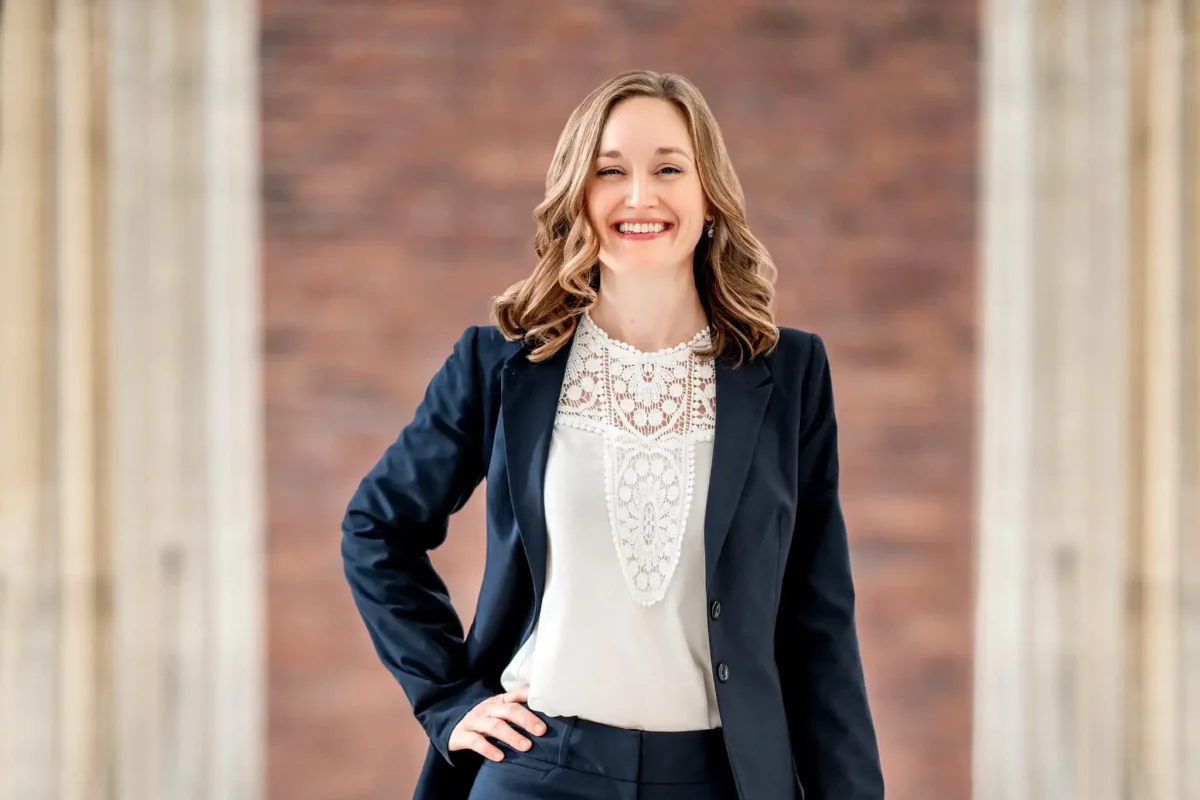Every semester, a few education majors at Gannon University are placed at the Barber National Institute to complete their practicum or student teaching requirements.
At the institute, students work in a variety of classrooms, including life skills classes and autistic support. Some students obtain employment at the organization while they’re still in school, with work at summer camps and the like.
The institute’s mission and purpose, however, work far beyond the walls of Gannon and even the Erie community.
Since the Barber National Institute first opened its doors in 1952, the lower east side complex has developed immensely. For its supporters and faithful employees, the additions are a fitting tribute to its founder and matriarch, Dr. Gertrude A. Barber.
Throughout nearly six decades of growth and change, however, the mission has remained the same for the now-statewide organization, something its founder would be proud of, says those who knew Barber best.
“I’m sure that her legacy is living on,” said supporter and Barber confidant Irene Smerick.
“The center is a tribute to her. It’s very inspiring to think that one woman like this made such a difference in so many people’s lives.”
It is this dedication and commitment that her supporters have maintained to carry on Barber’s mission since her death in 2000.
In fact, more so now than ever.
The Barber National Institute, a nonprofit organization that provides services to developmentally disabled children and adults, celebrated the 100th birthday of its venerable founder last month. On Sept. 16, the Barber National Institute held its annual Founder’s Day celebration to commemorate this milestone and kick off a $1 million fundraising campaign that will continue through 2012.
The Barber National Institute, which began as a one-room classroom, now includes a school, preschool, job training and placement services, and therapy center for persons with autism, mental retardation and other physical and intellectual disabilities. In addition, the organization has 46 group homes where disabled adults reside in neighborhoods throughout Erie County.
The wide range of programs and services are funded in part through reimbursement from state and county governments, as well as with philanthropic contributions from donors and support of fundraising events.
Throughout its Erie campus, located at the fitting address of 100 Barber Place, employees, supporters and clients took part in numerous Founder’s Day festivities.
A petting zoo was set up for all to enjoy, while a band provided musical entertainment and accompaniment for many enthusiastic dancers. Afterward, a refreshment and dessert reception gave staff a chance to admire their work and take a well-deserved break from their demanding posts while munching on cake and apple snacks.
From a celebratory standpoint, the joyful festivities were a hit.
But for some of the hundreds of people whose lives were changed by Barber, the occasion was cause to remember the significant impact left by this remarkable woman.
Smerick recalled when she first sought the advice of Barber nearly 60 years ago.
The year was 1954, and Smerick’s daughter, Rosemary, was born with Down syndrome. Her doctor told Smerick that she should send the infant away to an institution downstate.
“He told me that there was no hope, and that we should get her in an institution before we grew attached to her,” she said.
Smerick could not bring herself to follow the doctor’s advice, but was worried about how she would care for her daughter. She sought the counsel of Barber, who immediately put her fears to rest.
“I had an appointment with Dr. Barber in 1955, and I was upset and concerned about what she was going to say,” Smerick said. “Dr. Barber’s attitude right away was one of hope. She put Rosie on her lap, and said, ‘You have such a beautiful little girl.’ She said, ‘We will help you and your family.’”
Smerick’s experience with Barber was not an isolated incident, nor was the care with which Barber delivered her message.
Barber started the then-Gertrude A. Barber Center in 1952 following a successful career as a teacher and administrator in the Erie School District.
After earning her master’s degree in psychology from Edinboro University in 1945, Barber was appointed the school district’s coordinator of special education, where she worked with disabled children and their parents. The experience was a life-changing one for Barber, who took up the cause of bringing education and opportunities to children and adults with disabilities.
Dr. Maureen Barber-Carey, Ed. D., the Barber National Institute’s executive vice president and a niece of Gertrude Barber, said her aunt’s work was a direct result of this experience.
“She was the one that had to tell the parents that their children were developmentally disabled and that there weren’t any programs to help them,” she said. “This caused her such displeasure that she decided to do something about it.”
The Barber National Institute now serves more than 3,600 children and adults annually in its locations in Erie, Corry, Pittsburgh and Philadelphia, and has grown to employ more than 2,100 workers.
Even though it has grown in size, the Barber National Institute has never forgotten its founder.
“Her legacy absolutely lives on here,” Barber-Carey said. “We continue to offer the highest quality care for children and adults with developmental disabilities.”
It is this reason that the Barber National Institute has taken steps to ensure Barber’s endeavors are never forgotten.
In 2003, the Barber Center changed its name to the Barber National Institute when it opened a multi-million dollar addition in the north corner of the Erie campus. The addition was a tribute of sorts to its founder, who had died three years earlier at the age of 88.
Inside the doors of the north lobby resides a statue of Barber, in which she is appropriately flanked by three children on a replica of her sitting room couch. Above the life-size bronze likeness of the founder is one of the quotes that she was known for, “Your child is welcome here.”
One of these children may have been Nancy Darker, who, now in her 50s, has been utilizing the Barber National Institute’s services for 33 years.
Each time she passes the statue, Darker hugs and kisses the sculpted Barber for several minutes.
Darker is not alone in her veneration of Barber, as other patrons of the center’s services remember the life-changing experiences Barber provided to them.
Jim Netkowicz, now 53, recalls the coffee and doughnuts he shared with Barber each morning, as well as the friendship she provided for everyone she knew.
“She was everywhere, and she was always nice to everyone,” he said. But for Netkowicz personally, he could think of only one way to characterize the way Barber treated him: the A-O.K. gesture.
Smerick recalls Barber’s legacy as one of love.
“She took a real interest in people—she was just a genuine, compassionate person,” Smerick said. “She had a wonderful way about her. She was able to calm parents, and give them hope.”
Barber also parlayed that loving image into the cause to which she devoted her entire life, Barber-Carey said.
“Before the MHMR (Mental Health/Mental Retardation) act of 1966, there was no funding from the state level,” she said. “Up until then fundraisers were the main source of support. They would have penny drives, bake sales, ice cream socials and other things like that. There were all kinds of ways that they tried to secure money.”
Barber-Carey also stresses the role Barber had as an advocate for the disabled.
Barber was often on the front line advocating for better treatment of children and adults with developmental disabilities. She often made trips to state legislature meetings lobbying for more funding, and was on the front lawn of the White House when President George H.W. Bush signed into law the Americans with Disabilities Act in 1990.
The vision that Barber initiated nearly 60 years ago seems to be alive and well as evidenced by the hundreds of disabled and staff members alike dancing in one of the adult workshops developed by Barber. When the band, Bus 17, plays Neil Young’s “Keep on Rocking in the Free World,” the group sings along in unison.
“We know how to have a lot of fun here,” says John J. Barber, president and chief executive officer and nephew of the founder. “Whenever a visitor comes in here, they think it’s going to be sad or depressing, but they’re always surprised to see what kind of fun we have.”
For Smerick, however, her first meeting with Barber in 1955 best illustrates the kind of joy the Barber National Institute inspires.
“Dr. Barber said that Rosemary has a lot of potential,” Smerick said of her daughter, who died in 1999. “The love Dr. Barber showed her said that she was special and that all children are children of God.”







